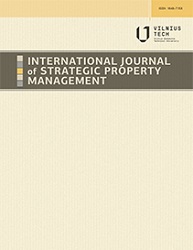An Analysis on the Role of Urban Land Market in Spatial Development of Cities: A Case Study of Mashhad, Iran
An Analysis on the Role of Urban Land Market in Spatial Development of Cities: A Case Study of Mashhad, Iran
Author(s): Jafar Mirkatouli, Reza SamadiSubject(s): National Economy, Social development, Management and complex organizations, Rural and urban sociology, Socio-Economic Research
Published by: Vilnius Gediminas Technical University
Keywords: Urban land market; Spatial development; Neighborhoods development; TOPSIS; Mashhad;
Summary/Abstract: The purpose of this paper was to study the role of the urban land market in the spatial development of Mashhad. In this study, factors such as the status of buying and selling land, standard deviation of habitants’ income, changes in green space, land-use realization rate, and building violation formed the indicators for appraising the land market. The MORRIS model was used to evaluate the rate of development of this case study in three general groups, namely economical, social-cultural, and spatial-physical. The TOPSIS model was also used in classifying the development of each urban district. The effect of each development indicator on the general development was attained by using multivariate regression. The results showed that the economical development indicator has the highest effect on total development of the district. Pearson’s correlation coefficient was used to study the relationship between each indicator of the urban land market and the development of neighborhoods in this district. The sale indicator for the effect of the urban land market on urban district development was evaluated by the causal modeling method, which has the highest influence on the spatial development in Mashhad. In fact, owing to the price of land in some neighborhoods, selling and buying of land increased – it resulted in land speculation, development of some parts of the district, and reduction of spatial equality among neighborhoods. It is suggested that introducing a more accurate tax system can reduce urban land speculation.
Journal: International Journal of Strategic Property Management
- Issue Year: 21/2017
- Issue No: 4
- Page Range: 371-383
- Page Count: 13
- Language: English

